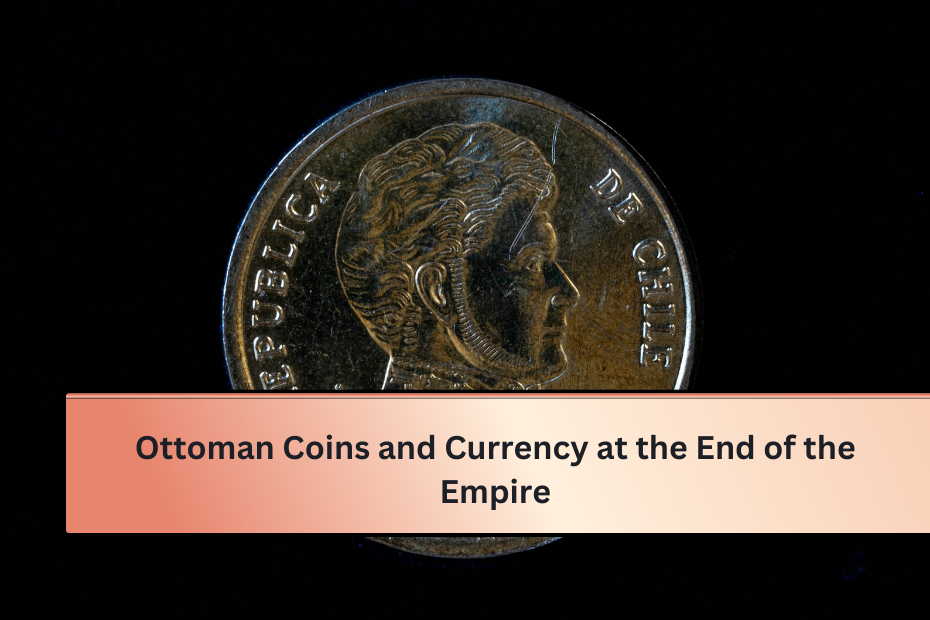The Ottoman Empire was one of the longest-lasting empires in history, stretching across parts of Europe, Africa, and Asia. It had a rich culture and a complex monetary system. This article explores the various types of currency used in the Ottoman Empire, especially during its final years in the late 19th and early 20th centuries. Understanding Ottoman coins and currency helps us see how they were influenced by social changes, economic challenges, and political events leading up to the establishment of modern Turkey in 1923.
Historical Context
By the late 1800s, the Ottoman Empire faced many problems. It was losing power and control due to internal conflicts, wars, and pressure from European nations. Countries like Britain and France were lending money to the Empire, making it difficult for the Ottomans to manage their finances. Because of wars and economic challenges, the Empire’s currency began to lose value, causing inflation and debt issues. The government tried to modernize its financial system, but it struggled to stabilize its economy during these tough times.
Types of Ottoman Coins: Gold, Silver, and Copper
During its last years, the Ottoman Empire used different kinds of coins, including gold, silver, and copper. These coins were not only money but also carried important meanings and designs.
Gold Coins (Altın or Lira)
Gold coins, known as “altın” or later as “lira,” were very valuable and often used for big purchases or saving wealth. They were beautifully designed with the sultan’s signature, called a “tughra,” making them a symbol of the Empire’s power.
Silver Coins (Kuruş)
Silver coins, called “kuruş,” were used for everyday transactions. They were common currency, although their value changed often, especially as the Empire declined. These coins also featured the sultan’s name and Islamic symbols, representing the Empire’s culture.
Copper Coins (Mangir)
Copper coins, or “mangir,” were smaller and used for daily needs. Unfortunately, by the end of the Empire, these coins had lost much of their value due to inflation, which made it hard for regular people to buy things.
Modernization in Currency
As the Empire struggled with debt and limited silver, it introduced paper money in the mid-1800s. This change was significant because it marked a shift to more modern financial practices.
Kaime-i Mutebere (Paper Money)
The first Ottoman paper money, known as “kaime,” was introduced in the 1840s. This money was like a promise from the government, not backed by coins. It aimed to give the Empire more control over its finances without relying solely on expensive metal coins.
State Control and Banknotes
In the 1870s, the Imperial Ottoman Bank was allowed to print banknotes with help from British and French investors. This meant the Empire could get funds but also had to share control over its finances. These banknotes, backed partly by gold, became essential to the economy, but too much money was printed, leading to inflation.
Foreign Influence and the Ottoman Debt Administration
One major factor in Ottoman currency was the influence of European countries, especially through the Ottoman Public Debt Administration (OPDA), set up in 1881. The OPDA was responsible for managing the Empire’s debt payments to European countries.
This organization controlled important revenues, like taxes on customs and tobacco. Because of this foreign influence, the Ottomans found it hard to stabilize their currency, which made it even more difficult to modernize their monetary system.
Economic Challenges and Hyperinflation
The late Ottoman Empire faced serious economic problems, including frequent changes in currency value and inflation, mainly due to wars and debts. This situation created hardships for people, as the money they used often lost its purchasing power.
The Impact on Coins
With hyperinflation, the silver kuruş became almost worthless, forcing people to use many coins for small purchases. Only the wealthy could afford gold coins, widening the gap between rich and poor.
War Expenses and the Currency Crisis
The Balkan Wars and World War I made things worse. The Empire printed more paper money to fund military actions, which led to massive inflation. Prices increased by over 1000% during these war years, making life difficult for ordinary people.
Design and Symbolism: Reflecting Ottoman Identity
Ottoman coins and banknotes featured unique designs filled with meaning, representing the Empire’s Islamic culture and the sultan’s authority. The tughra was a key symbol, representing the sultan and often including verses that highlighted Islamic values.
Besides being money, these coins and notes promoted the sultan’s image and reinforced the Empire’s unity. The artistic designs and Arabic writing displayed the Empire’s rich cultural heritage.
The Final Years: Transition to Turkish Currency
The last years of the Ottoman Empire were marked by financial instability and the rise of nationalist movements. After World War I, the Empire dissolved, and the Turkish Republic was established in 1923.
Retirement of Ottoman Coins
After the Republic was declared, Ottoman coins and banknotes were replaced with the new Turkish lira and kuruş. Old coins were collected, melted down, or repurposed, ending the era of Ottoman currency.
Formation of the Central Bank of Turkey
In 1930, Turkey set up its Central Bank to manage the new currency. This marked a move towards financial independence, as the new bank took over from the Imperial Ottoman Bank, which had foreign ties.
Legacy and Historical Significance of Ottoman Currency
Today, the coins and banknotes from the late Ottoman Empire are valuable to collectors and historians. They provide insights into the Empire’s final years, including the social and economic impacts of its financial policies.
Ottoman currency is a record of how the Empire tried to stay united during difficult times. The final designs reflect its cultural heritage and the challenges faced in a changing world. Many of these coins and banknotes are preserved in museums, private collections, and markets in former Ottoman regions.
Conclusion
The story of Ottoman coins and currency at the end of the Empire shows how it adapted to many challenges. As the Empire declined, its monetary system became crucial for maintaining unity and authority. Economic troubles, outside pressures, and modernization forced significant changes in currency policies, leading to a shift from metal coins to banknotes.
Today, Ottoman currency, from gold coins to paper notes, tells a story of a complex history influenced by European powers. These coins and banknotes are not just collectibles; they are historical artifacts that give us a glimpse into a once-mighty empire. The legacy of Ottoman currency continues in modern Turkey’s financial system, shaped by efforts to balance old traditions with the need for progress.
FAQs
1. What types of currency were used in the Ottoman Empire?
The Ottoman Empire used various types of currency, including gold coins (altın or lira), silver coins (kuruş), and copper coins (mangir). In the mid-19th century, paper money was also introduced to help manage financial challenges.
2. Why did the Ottoman Empire experience inflation and economic difficulties?
The Ottoman Empire faced inflation and economic troubles due to factors such as wars, national debt to European creditors, and internal rebellions. These challenges led to currency devaluation and increased the cost of living for ordinary citizens.
3. What role did foreign powers play in Ottoman currency policies?
European powers, particularly through the Ottoman Public Debt Administration (OPDA), exerted significant influence over the Empire’s financial policies. They controlled key revenues and played a crucial role in managing the Empire’s debts, limiting its ability to stabilize its currency.
4. How did the introduction of paper money affect the Ottoman economy?
The introduction of paper money in the mid-19th century was an effort to modernize the financial system. However, it led to inflation when too much money was printed, further complicating the economic situation and reducing the purchasing power of citizens.
5. What happened to Ottoman coins and currency after the Empire ended?
After the Ottoman Empire dissolved following World War I, the new Turkish Republic replaced Ottoman coins and banknotes with the Turkish lira and kuruş. Old coins were gradually retired, marking the transition to a new monetary system.

